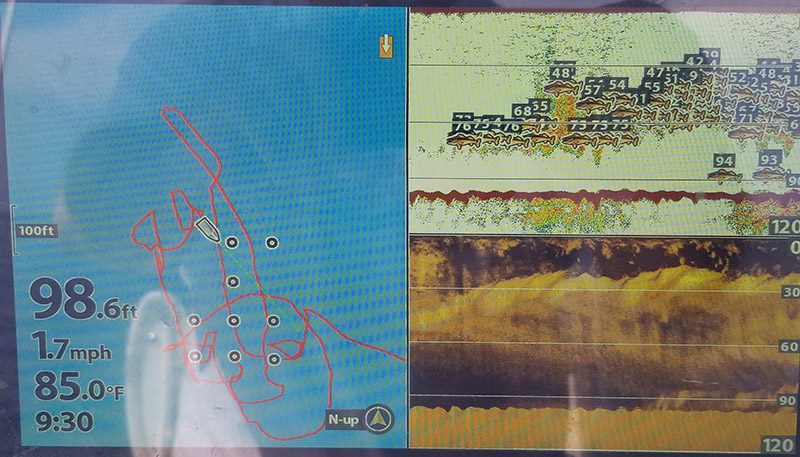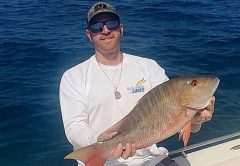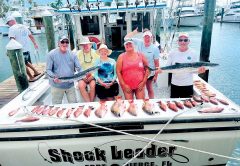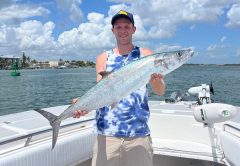
St. Lucie County Artificial Reef Update
The first of 12 reefs in the Paul Jacquin and Sons Artificial Reef Complex was monitored on August 14. Monitoring of this reef, deployed just north of the CCA-Curtis Bostick Reef, showed that the new reef was already adding diversity of habitat and had expanded fish stocks in the area.
Sunrise City Eco-adventures organized a volunteer dive on the CCA-Curtis Bostick Reef to gather information on this reef for the St. Lucie County Artificial Reef Program. Philippe Yersin, manager of the Eastern Academy of Scuba Education, documented species on this reef including amberjack, Goliath grouper, a juvenile angelfish, one blue angelfish, one rock beauty, snapper, ocean surgeonfish, and great numbers of baitfish, tentatively identified from video as Spanish sardine and blue runner. Warmer water fish, like yellowtail snapper and blue angelfish are occasional visitors to St. Lucie County artificial reefs but the rock beauty and surgeonfish had never been recorded before.
From the CCA-Curtis Bostick Reef the divers drifted to the closest Paul Jacquin Reef and documented amberjack, barracuda, ocean surgeonfish, common snook, and many juvenile tomtates. The proliferation of schooling forage fish from the CCA-Curtis Bostick Reef to the Paul Jacquin and Sons Reef is a good sign for anglers in the area. The elimination of the 10A buoy has reduced areas available for anglers to catch live bait. It is hoped that another baitfish reef can be deployed in shallower waters.
In addition to providing additional areas for fishing and diving, the Paul Jacquin and Sons Reef was designed to act as a companion reef to CCA-Curtis Bostick Reef. By expanding the forage base (a policy advocated by the Morris-Deal Report and incorporated into the National Oceanographic and Atmospheric Administration’s National Saltwater Recreational Fisheries Policy), the Paul Jacquin and Sons Reef will provide additional energy sources for predators (e.g. king mackerel) and gag, while also providing low profile hardbottom where juvenile fish from the snapper-grouper complex can grow before recruiting to the higher profile CCA-Curtis Bostick Reef.
Monique Guertin, from Sunrise City Ecoadventures, is organizing post-deployment dives by volunteers on the remaining 11 Paul Jacquin Reefs and also will take volunteers on monthly dives to conduct in-water surveys of 26 limestone special artificial reef modules that were deployed in 2015, but whose locations have only recently been found.
A short video taken by Shelby Thomas of 1,000 Mermaids showing the first of the twelve Paul Jacquin and Son reefs to be monitored can be viewed below. Photographs of this first reef to be monitored, show a number of smaller ledges were produced. It is hoped that monitoring of the remaining 11 reefs will reveal additional ledge and cryptic habitat. To learn about volunteer diving contact Monique Guertin at sunrisecityecoadventures@gmail.com or at (772) 999-1330.
Funding for the reef came from a contribution by Paul Jacquin and Sons, Inc., a grant from the Florida Fish and Wildlife Conservation Commission and the St. Lucie County Artificial Reef Program. To get more grant funding, the program needs to obtain more information on angler and diver use of any of its artificial reefs. To submit a report on experiences on any of St. Lucie County’s artificial reefs or to get more information about the St. Lucie County Artificial Reef Program, contact Jim Oppenborn, St. Lucie County Coastal Resources Coordinator at oppenbornj@stlucieco.org or (772) 462-1713.




